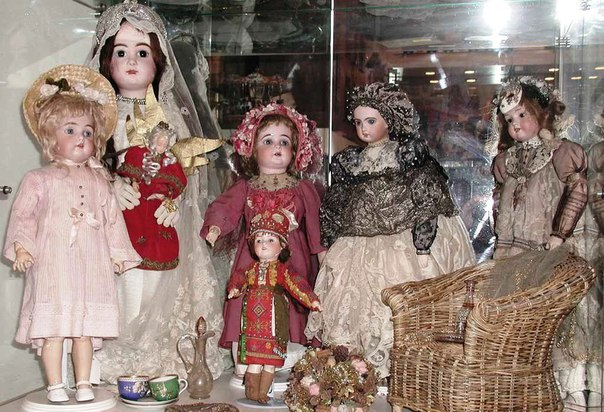History of dolls
The very existence of a doll coincides with the beginning of human civilization itself. Prehistoric dolls are rough works from a variety of materials. Man, creating a doll, gave her the desired resemblance. Used in ancient times as an image of a deity, dolls played a significant role in ceremonies and rituals associated with religion.
Collections of dolls - one of the leading hobbies of busy people around the world. Love for dolls goes back to childhood. Such collections are an attempt to preserve pleasant memories of childhood or create a valuable collection of dolls for descendants.
Historically, dolls have different shapes and many unique shapes. The toy of the child in most doll versions represents the representation of a child or another person. Dolls, designed to resemble animals or imaginary creatures, eventually became popular.
Historical popularity of dolls is not limited exclusively to children. Dolls that existed before the 1700s were not considered to be exclusively toys for children; they were also meant for adults. It was found that ancient dolls were more like sculptures than toy analogs. Children in all cultures, all races existing on Earth, like to play with dolls.
It was found many different types of dolls, scattered in the relics of ancient civilizations. Considered by primitive people cult objects, in Rome, Egypt and Greece were found well-preserved dolls, carved from stone, wood, clay, bone, ivory and poured from bronze.
It was assumed that the dolls were used not just as toys, they were symbols. There are examples of dolls with moving arms and legs that were found in areas where ancient Greece was located. In Roman Catholicism, crocheted dolls were considered artistic masterpieces, they were used as representations of birth. Dolls in the XV century became popular as gifts among members of royal families and their courtiers.
Surprisingly, dolls played a significant role in the distribution of various styles of costume. Dolls brought to the American colonies reflected the current fashion trends and even modeled the latest hairstyles, illustrating European culture in miniature. Throughout history, dolls have changed, often repeating the latest trends in fashion and style.
Where there were dolls, the child's gender issue is not a problem. In the 17th century both boys and girls played dolls. At this time, Germany became recognized as a kind of center for the production of wooden dolls. The city Sonneberg later became the leading producer of heads for dolls. By the beginning of the 19th century, the heads were made of porcelain.
In the industry of the Parisian dolls, they began to develop models that could close their eyes and pronounce words. The fact that the Paris puppet industry specializes in the production of dolls of "high fashion", perhaps, is not surprising. The use of papier-mache as a material for making dolls in the early nineteenth century stimulated the industry to produce dolls on a large scale. Commonly used materials for making dolls at this time included wood, porcelain and wax. Later, hard rubber was used. Straw and rag dolls are inexpensive and simple domestic products. Both of them quickly gained commercial popularity. The production of dolls during the twentieth century has become a large and prosperous industry.
Dolls come in different sizes, colors and designs. There are baby dolls, there are those who go and talk, there are those who grew up, made a career and got their own families.
Together with dolls or separately purchase accessories that are quite expensive. Puppet clothing, equipment, furniture, ornaments and related details can make up a complete set that collectors collect with dolls.
Someone places their dolls in a display case, others store them in packages. You can see the collection of dolls on mantels, chests of drawers, bookcases and other places. There is a certain type of collector of dolls that buys for pleasure, and often presents them as gifts. Some of these dolls can be used as decorations for the house during special events or festive celebrations.
There are collections of dolls from around the world or those that cover a certain period of time. There are dolls representing the past generations, others can represent a certain region. Regardless of your interest, you can collect an attractive and interesting collection that you will be proud of.
Traditionally, dolls are considered toys for children. Although this may have been the original intention with respect to the purpose of the doll, but they are no longer considered only as a toy. Currently, adults collect a collection of dolls. This became a very popular hobby, perhaps, in the history of mankind dolls were not so popular.
Dolls are collected for reasons of their uniqueness and diversity. And another reason why people collect dolls is nostalgia, doll beauty, craftsmanship or design, historical significance or as an investment in a costly collection. Dolls have the ability to conquer people's hearts. They are looking for, dreaming about, loving and caring.

Congratulations,
you just received a 18.86% upvote from @steemhq - Community Bot!
Wanna join and receive free upvotes yourself?

Vote for
steemhq.witnesson Steemit or directly on SteemConnect and join the Community Witness.This service was brought to you by SteemHQ.com